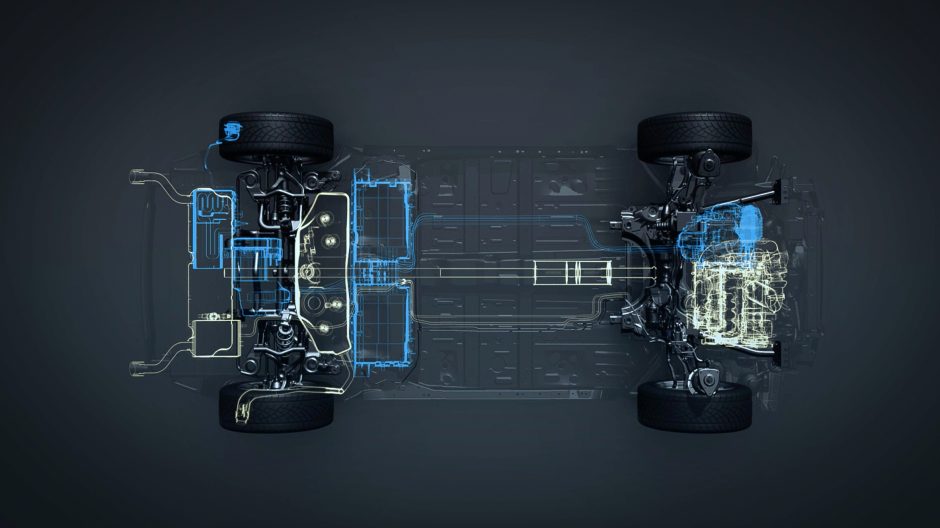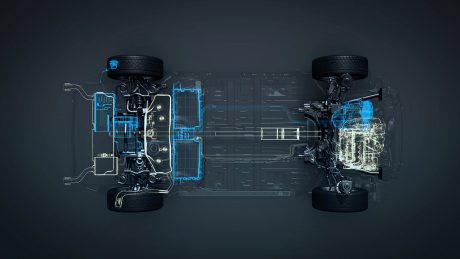
Rüsselsheim TechDay (11–14 June 2018): An audience of about 240 journalists, financial analysts, suppliers, retailers, politicians, and employees will learn about the key role the Rüsselsheim research and development center is taking on within Groupe PSA’s global engineering network.
Even though the electrification of the Opel model range is at the core of the PACE! plan, that doesn’t mean the end of the combustion engine. In fact, quite the opposite is true. To clarify this, Dr. Matthias Alt outlined what the industry will look like in 2030 at the ‘State-of-the-art powertrains minimize CO2 emissions’ workshop: “45 percent of all cars will be powered by electric drive systems, more than 80 percent of them as a hybrid, that is, in combination with a combustion engine.” The Opel Global Engine Chief Engineer therefore expects that the number of combustion engines will even increase in the future. “In addition, combustion engines are currently playing an important role, in addition to electrification, when it comes to reducing emissions.”
In the future, Alt and his fellow workers will focus on the battery-electric drive system (BEV), the hybrid drive, fuel cells, and the combustion engine. “Working together with Groupe PSA makes our solutions extremely cost efficient as we can increase unit volumes and thus reduce production costs,” says Alt.
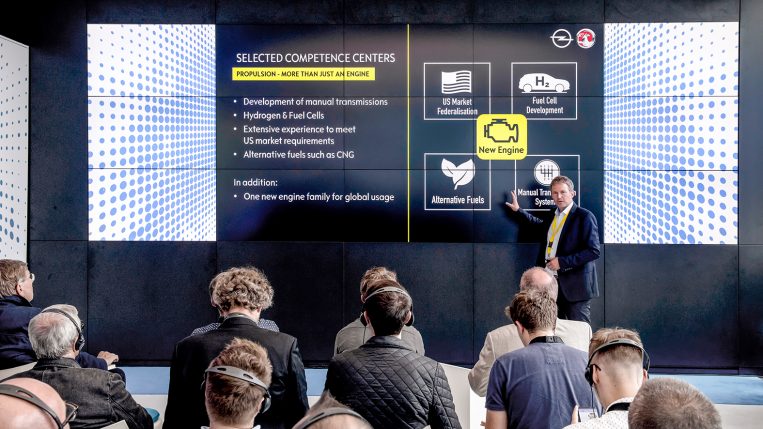
Quartet of drive systems: Dr. Matthias Alt explains what Centers of Competence have already been established by Groupe PSA in the field of drive systems in the Rüsselsheim Engineering Center.

State of the art: Alt explains the new 1.5 BlueHDi diesel engine, which delivers 102 to 130 hp, meets the Euro 6d TEMP standard, and boasts 100% digital design and engineering.
The important role that drive systems play for Opel is underscored by the establishment of the Centers of Competence for manual transmission systems, hydrogen & fuel cells, alternative fuels, and the development responsibility for a new global gasoline engine family.
“Thanks to our extensive experience, we have now assumed global responsibility for the entire Group in these areas. The four-cylinder turbo engines to be introduced in 2022 are being developed for all markets and brands of Groupe PSA.”
![]()
“Our engines are already future-proof and, in addition, every future passenger car model series in Europe will be electrified.”
– Dr. Matthias Alt –
![]()
The cooperation delivers a win-win situation for the entire Group. “We thus have a solid CO2 strategy for meeting the 95-gram CO2 limit of the EU by 2020. Our engines are already future proof and, in addition, every future passenger car model series in Europe will be electrified.”
↑ Video: State-of-the-art powertrains minimize CO2 emissions
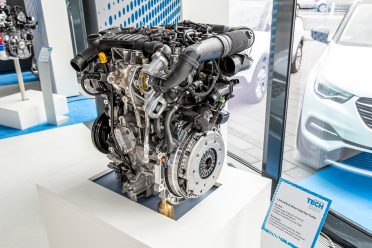
‘Engine of the Year’: The 1.2 PureTech Direct Injection Turbo, which delivers up to 130 hp and 230 Newton meters and meets the Euro 6d-TEMP emission standard.
Finally, Dr. Burkhard Milke gives an overview and outlook on how Opel is strategically positioned in terms of electrification and mobility. “After the Ampera and the Ampera-e, which have been the industry’s leaders, we have to look ahead,” says the Director Electric & Electronic Systems.
By 2020 Opel will be manufacturing four electrified model series, and by 2024 this will encompass all passenger car models in Europe. “The multi-energy platforms allow us to electrify multiple vehicles within a short period of time.”
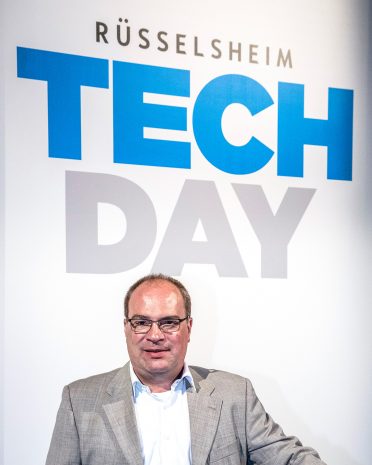
Dr. Burkhard Milke, Director Electric & Electronic Systems, explains the strategy of the Center of Competence for Alternative Drive Systems.
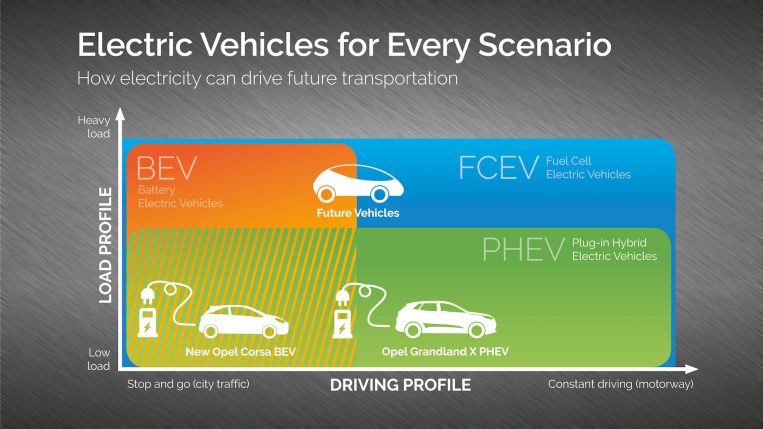
Multi-purpose solutions: Battery-electric drive systems (BEV) are perfect for city traffic, plug-in hybrid drive systems (PHEV) are best suited for highways, while fuel cell vehicles (FCEV) have a broad range of applications.
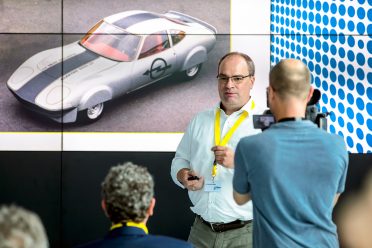
The Electric GT of 1971: On the way to the strategy of the future, Milke makes a detour to the past.
The Grandland X 2020 as PHEV (plug-in hybrid) will be the first to roll off the production line in Eisenach. “The PHEV will be produced on the same production line together with the Grandland X and will offer the same seating capacity,” continues Milke.
The same is true for the new Corsa, which is to roll off the production line as eCorsa in Zaragoza in 2020, with no compromise on seating capacity. “Year 2020 will also see the electrification of the product portfolio of our light commercial vehicles.”
![]()
“The PHEV will be produced on the same production line together with the Grandland X and will offer the same seating capacity.”
– Dr. Burkhard Milke –
![]()
According to Milke, battery-electric vehicles (BEV) should be able to accommodate any scenario in the future: “BEVs not only offer advantages in city traffic for passenger cars such as the upcoming eCorsa, but, due to advances in battery technology, are now also the preferred choice for transporting heavy loads in CO2-sensitive environments. We will therefore equip the light commercial vehicle portfolio accordingly.” Despite improved BEV performance, the PHEV technology also has a promising future. “Of course, PHEV is fully suitable for urban use, but it comes with the additional option of using it for high or unlimited range applications,” says Milke.
June 2018
